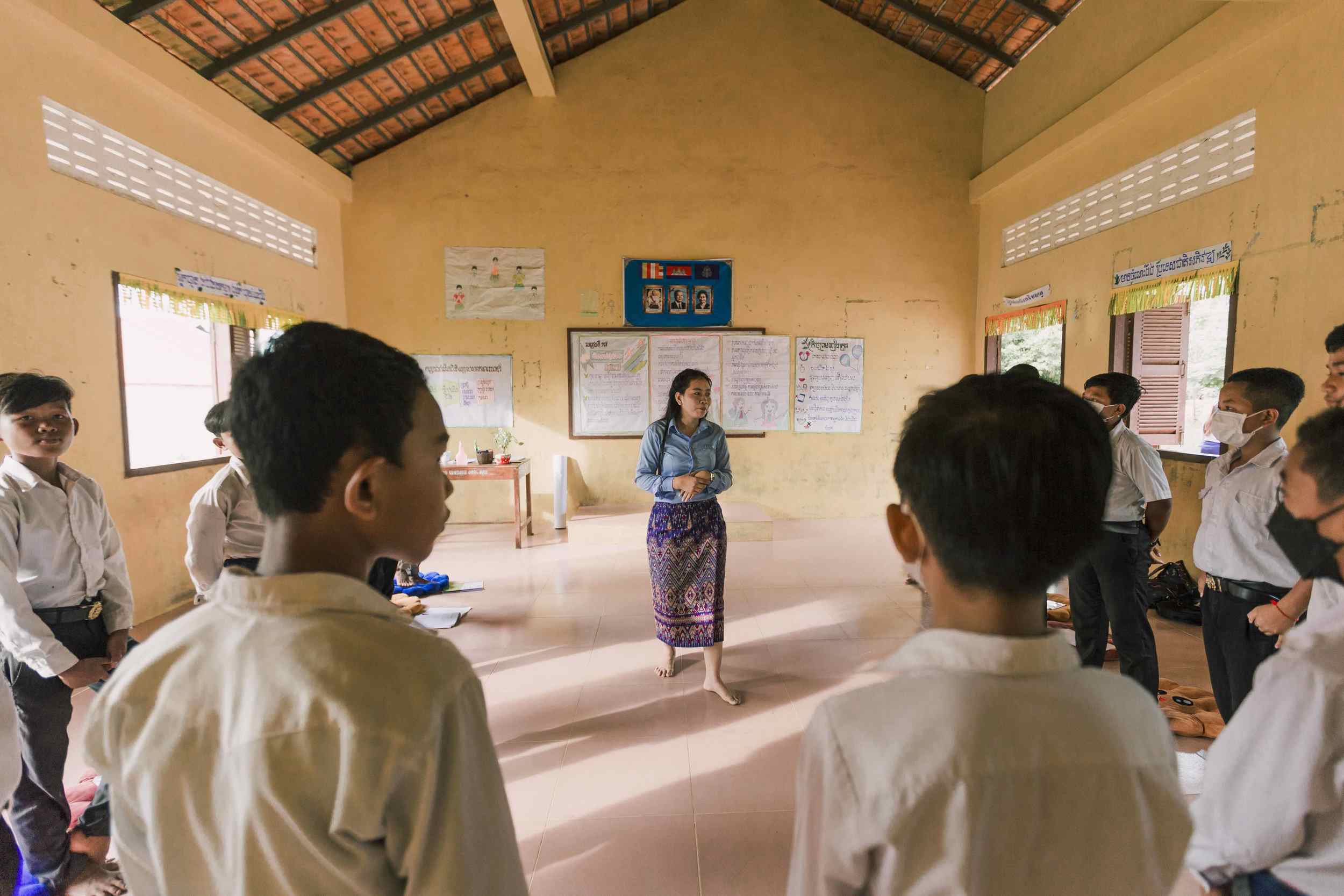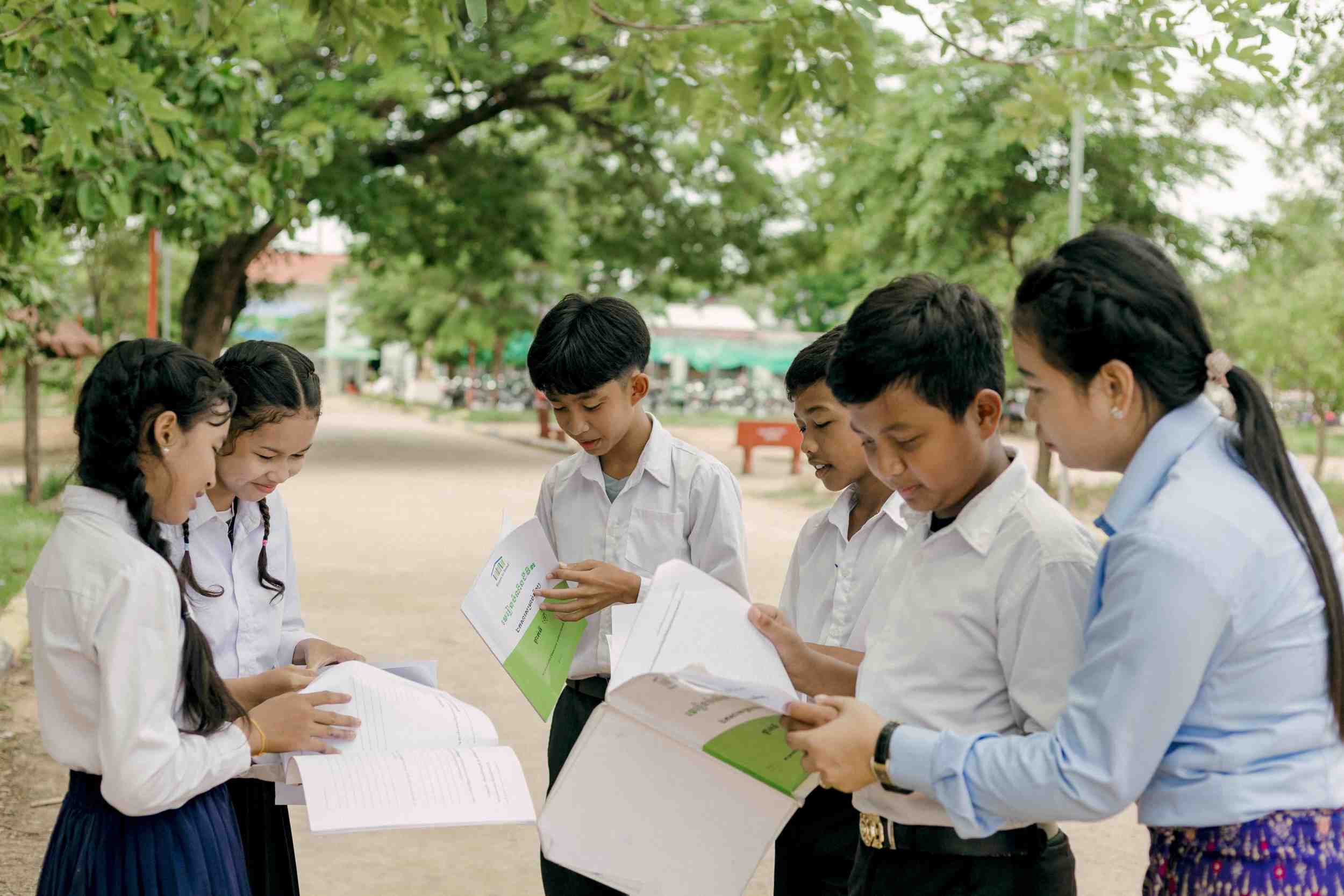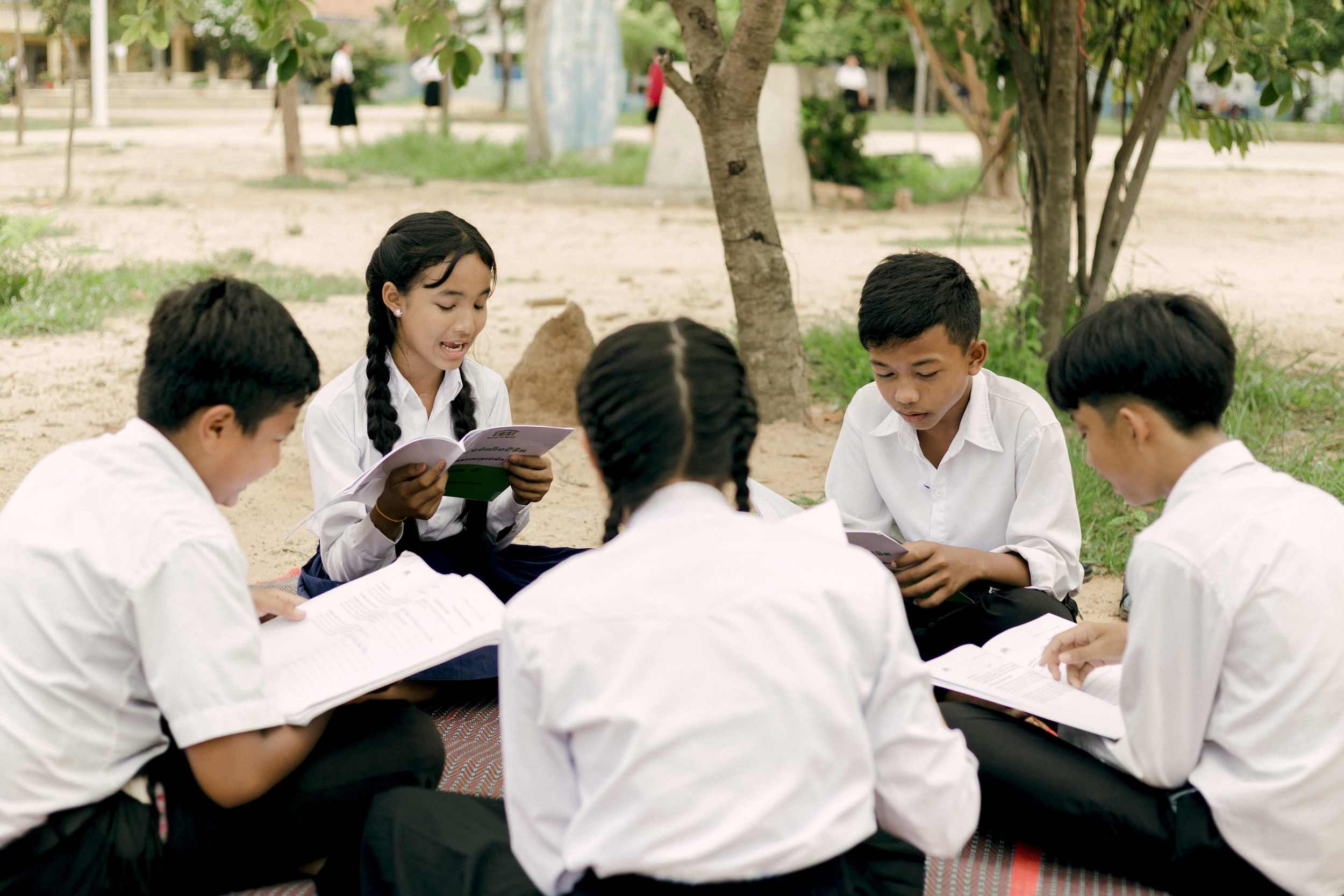Improving gender equality by reshaping boys’ gender attitudes
Room to Read’s learnings from Cambodia | May 30, 2023

By Dhiraj Anand
Associate Director of Research, Monitoring and Reporting
Room to Read's Girls’ Education Portfolio
In recent years, we’ve seen growing acceptance — even demand — for the engagement of men and boys in the gender justice movement across schools and communities. This is evident in many programmatic interventions that focus on men and boys globally as agents of change for gender equality, with the understanding that they too are negatively affected by unequal gender norms that stifle their emotions and ability to establish healthy relations with their peers (Dhar, et al. 2022; Keddie, A. 2021; Peacock, 2012; World Health Organization, 2007).
Still, a simple Google search with keywords like "engaging boys/men for gender equality" shows that, in most cases, programs engaging with boys in educational or community spaces are still largely spearheaded by non-governmental organizations or international development agencies. To advocate for sustained formal inclusion of such programs across educational systems, we need more evidence that highlights how engaging adolescent boys in issues of gender justice and equality can result in positive behavioral changes, leading to safer and more equal environments and improved educational outcomes.
Understanding this need, Room to Read, in collaboration with the government of Cambodia, is piloting a school-based program that engages boys in classroom discussions about gender equality. The Life Skills for Equality Project (LSEP) is being tested in the Banteay Meanchey province of Cambodia, supporting secondary school boys in Grades 7 and 8 to develop life skills needed to succeed in school and beyond while challenging harmful gender norms. Through specially designed classroom sessions and school events, boys engage with their boy and girl peers to discuss various topics through the lens of gender dynamics, such as health, equality, sexual violence and harassment. 
After the first year of the program, Room to Read’s Girls’ Education Program team set out to determine if the pilot was meeting our goal of eroding restrictive gender norms, or if adjustments were needed. We conducted two independent studies — a quantitative (a census-based study) and a qualitative (a sample-based study) to generate learnings on various components of the pilot.
Below are some of the learnings from these studies:
1. Boys have improved awareness of gender-related concepts. Overall, there is a statistically significant improvement in the boys' awareness of gender concepts like masculinities, gender-based roles, puberty, sexuality, health, etc.
2. Improved interaction among boys and girls. Some of the gender transformative sessions engaged girls in the discussion of various gender topics. Findings suggest that girls feel that the frequency of interaction among girls and boys has largely remained unchanged, but those interactions are perceived by girls as more respectful. This is confirmed by boys as well. Boys also shared that they reflect more before talking to girls, as they want to avoid saying something inappropriate or offensive. These findings create an opportunity for Room to Read to focus on the other component of the LSEP program — voluntary life skill clubs where both boys and girls can discuss the lessons they have learned from the program in a safe and respectful environment for everyone.
3. Program facilitators and teachers are more informed on gender issues. After engaging in this project, program facilitators and teachers reported that they felt more informed and that their understanding of gender issues and concepts had improved. Moreover, women teachers reported that they felt more confident in speaking out and expressing themselves. Men facilitators also reported that they are now better able to examine various gender inequalities that play out in their daily lives.

While discussing the findings with various Room to Read teams, the first question centered on expectations — what changes can we expect in one year of program implementation and what is the benchmark for success? The pilot studies reveal positive changes at the awareness level and some behavioral changes among boys, which indicates that the program works even if the duration is limited to a single year. However, there may have been other shifts and changes due to various programmatic components that we have not been able to capture in the pilot studies. Going forward, we will continue to work on gathering evidence of the program’s effectiveness and sustainability across countries, as there is an increasing interest among other countries where Room to Read works in implementing and scaling up this program.
References
Note: Evaluation reports can be downloaded here.
Amanda Keddie (2021) "Engaging boys in gender activism: issues of discomfort and emotion," Gender and Education, 33:2, 171-185, DOI: 10.1080/09540253.2020.1716956
Dhar, Diva, Tarun Jain, and Seema Jayachandran. 2022. "Reshaping Adolescents' Gender Attitudes: Evidence from a School-Based Experiment in India." American Economic Review, 112 (3): 899-927.
Peacock, D. 2012. "Working with Men and Boys to Promote Gender Equality: A Review of the Field and Emerging Approaches," Prepared for the Expert Group Meeting Prevention of violence against women and girls. UN Women, in cooperation with ESCAP, UNDP, UNFPA, UNICEF and WHO, Bangkok, Thailand, 17 – 20 September.
World Health Organization. 2007. "Engaging Men and Boys in Changing Gender-Based Inequity in Health: Evidence from Programme Interventions." Geneva: World Health Organization.








